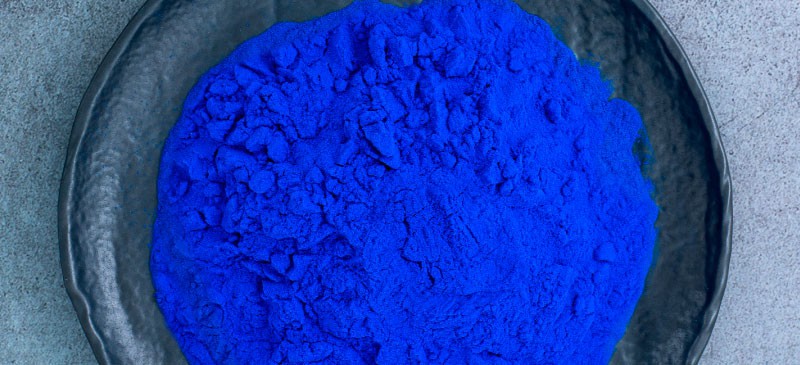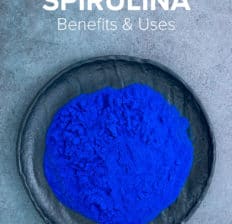This Dr. Axe content is medically reviewed or fact checked to ensure factually accurate information.
With strict editorial sourcing guidelines, we only link to academic research institutions, reputable media sites and, when research is available, medically peer-reviewed studies. Note that the numbers in parentheses (1, 2, etc.) are clickable links to these studies.
The information in our articles is NOT intended to replace a one-on-one relationship with a qualified health care professional and is not intended as medical advice.
This article is based on scientific evidence, written by experts and fact checked by our trained editorial staff. Note that the numbers in parentheses (1, 2, etc.) are clickable links to medically peer-reviewed studies.
Our team includes licensed nutritionists and dietitians, certified health education specialists, as well as certified strength and conditioning specialists, personal trainers and corrective exercise specialists. Our team aims to be not only thorough with its research, but also objective and unbiased.
The information in our articles is NOT intended to replace a one-on-one relationship with a qualified health care professional and is not intended as medical advice.
Exploring Blue Spirulina: A Vibrant Natural Food Coloring Agent & Antioxidant-Rich Extract
June 24, 2023

In recent years, there has been a growing interest in natural and healthy alternatives to artificial food colorings and additives. Among the remarkable discoveries in this realm is blue spirulina, an extract derived from a species of blue-green algae.
Beyond its striking hue, blue spirulina offers a range of potential benefits, making it an intriguing ingredient in the culinary and health industries.
Known for the presence of phycocyanin, a powerful antioxidant, blue spirulina owes its vibrant blue color to this pigment that sets it apart from other varieties of spirulina. Blue spirulina is reported to contain a significant amount of phycocyanin, contributing to its various health benefits, including reducing inflammation, supporting immune function and potentially even protecting against certain chronic diseases.
From vibrant smoothie bowls and baked goods to refreshing beverages, blue spirulina opens up a world of creativity for culinary enthusiasts while also contributing to your overall well-being.
What Is Blue Spirulina?
Blue spirulina is a natural extract derived from certain species of blue-green algae, particularly Arthrospira platensis. It’s renowned for its vibrant blue color, making it a popular ingredient in the food and beverage industry, as well as in health and wellness products.
Blue spirulina contains a powerful antioxidant pigment called phycocyanin, which is responsible for its distinct blue hue. It offers numerous potential health benefits, such as anti-inflammatory properties, antioxidant support and immune system enhancement.
Often used as a natural food coloring agent in smoothies, desserts, beverages and various culinary creations, blue spirulina adds an attractive blue or turquoise color to dishes, while also boosting health. It’s a nutrient-dense substance, containing essential vitamins, such as vitamin B12; minerals, including iron, calcium and magnesium; protein; and other beneficial compounds that contribute to overall nutritional support.
While blue spirulina and green spirulina are often confused, they are derived from different species of algae and possess distinct characteristics.
Here are the key differences between the two:
- Source: Blue spirulina is derived from specific species of blue-green algae, particularly Arthrospira platensis. Green spirulina, on the other hand, typically refers to the regular spirulina powder obtained from the species Arthrospira platensis or Arthrospira maxima, which has a greenish color.
- Pigment and Color: The primary difference between blue spirulina and green spirulina is their pigment composition. Blue spirulina derives its intense blue color from the phycocyanin pigment, which is a blue pigment with antioxidant properties. Green spirulina gets its green color from a combination of chlorophyll (green pigment) and other pigments.
- Nutrient Content: Both blue spirulina and green spirulina are nutrient-dense and offer various vitamins, minerals and protein. Their nutrient content, such as the protein and vitamin B12 content, can be similar as they come from similar algae species, but the exact nutrient composition varies depending on the growing conditions, processing methods and brands.
- Usage and Applications: Blue spirulina is primarily used as a natural food coloring agent to add a vibrant blue or turquoise hue to foods and beverages. Green spirulina, on the other hand, is commonly used as a dietary supplement due to its rich nutrient profile. It’s often available in the form of powder or capsules and typically consumed for its potential health benefits.
Here are a few of the most common types of seaweeds and algae that are used as foods and/or supplements:
Benefits
While green spirulina gets more credit for its health benefits, blue spirulina offers several, too. Here’s a breakdown of its potential perks:
1. Antioxidant and Anti-inflammatory Properties
Phycocyanin, the active component of blue spirulina, possesses powerful antioxidant properties that help protect cells against oxidative stress and damage caused by free radicals.
Studies show that phycocyanin also exhibits anti-inflammatory effects, potentially aiding in reducing inflammation in the body.
2. Immune System Support
The micronutrients in blue spirulina have been found to enhance immune system function. Vitamins C, E and B6 stimulate the production of white blood cells and support the activity of natural killer cells, which play a vital role in combating infections and diseases.
3. Detoxification and Liver Support
Phycocyanin has shown potential as a natural detoxifier, aiding in the removal of toxins from the body. It may also offer liver-protective benefits by promoting the production of essential liver enzymes that support detoxification processes.
4. Exercise Recovery and Muscle Support
Some studies suggest that because blue spirulina is rich in antioxidants, it may help reduce exercise-induced oxidative stress and muscle damage, potentially aiding in post-workout recovery and enhancing exercise performance.
5. Potential Anti-Cancer Properties
While more research is needed, early studies have indicated that phycocyanin antioxidants in blue spirulina may possess anti-cancer properties. It has shown promise in inhibiting the growth of certain cancer cells and promoting apoptosis (cell death) in tumor cells.
How to Use/Dosage
Blue spirulina has a relatively mild taste, which has been described as slightly earthy or grassy, with subtle hints of seaweed. Compared to green spirulina, the taste is much more subdued but can vary depending on the concentration and the other ingredients it’s mixed with.
Blue spirulina can be used in various ways to add a vibrant blue or turquoise color to food and beverages. Here are some common methods of using blue spirulina:
- Smoothies and beverages: Add a small amount of blue spirulina powder to your smoothies, shakes or juices to give them a vibrant blue color. Start with a small quantity, and adjust according to your desired shade of blue.
- Desserts and baked goods: Incorporate blue spirulina powder into desserts like puddings, ice creams, yogurt bowls or chia seed puddings to add a visually appealing blue tone, while boosting the nutrient content. It can also be used in cakes, muffins or cookies for a unique color twist.
- Sauces and dressings: Mix blue spirulina powder into creamy sauces, salad dressings or dips to create eye-catching blue variations. Be mindful of the flavor compatibility, and adjust the quantity to avoid overpowering the taste.
- Smoothie bowls: Blue spirulina can be used to create visually appealing smoothie bowls. Blend it with frozen fruits and a liquid base of your choice, and then top with your favorite toppings like granola, fresh fruits, coconut flakes or nuts.
- Other creative uses: Blue spirulina is a natural food coloring that can be used in various creative culinary applications, such as making blue-hued pancakes, waffles or pasta. Use your imagination, and experiment with different recipes.
When using blue spirulina powder, it’s important to start with a small quantity and gradually increase to achieve the desired color. The intensity of the blue shade may vary depending on the amount used and the ingredients it is mixed with.
Additionally, be aware that using too much blue spirulina may result in a bitter taste, so it’s best to use it in moderation.
There is no universally established standard dosage for the colorant, so start with a small pinch or about 1/4 to 1/2 teaspoon of blue spirulina powder, and adjust as needed.
In the case of blue spirulina supplements or capsules, follow the recommended dosage instructions provided by the manufacturer. If you’re considering using blue spirulina as a dietary supplement for its potential health benefits, it’s important to consult with a health care professional to determine the appropriate dosage for your specific needs.
Risks and Side Effects
Blue spirulina is generally considered safe for consumption when used in appropriate amounts. However, as with any food or dietary supplement, there are a few potential risks and side effects to be aware of, including the risk of an allergic reaction and potential digestive issues, such as stomach cramps, nausea or diarrhea.
It’s also important to be aware that if blue spirulina is not sourced from reputable suppliers or processed under proper conditions, there is a risk of contamination with harmful substances such as heavy metals or microorganisms. To minimize this risk, it’s important to purchase blue spirulina from trusted sources.
Blue spirulina may interact with certain medications, such as immunosuppressants or anticoagulants. If you’re taking any medications or have underlying health conditions, consult with a health care professional before incorporating blue spirulina into your diet.
Also, exercise caution before using it if you are pregnant or breastfeeding.
Conclusion
- Blue spirulina is a natural extract derived from certain species of blue-green algae, particularly Arthrospira platensis. It’s a vibrant blue color, making it a popular ingredient in the food and beverage industry, as well as in health and wellness products.
- Blue spirulina is rich in antioxidants and some immune-boosting micronutrients, including vitamin C and vitamin E. It may also promote muscle recovery, and some studies suggest it may have anti-cancer properties.
- The colorant is largely used in the culinary world to add a bright blue color to baked goods, desserts and other dishes. When using it, start with a small amount (about ¼ teaspoon), and increase as needed.














